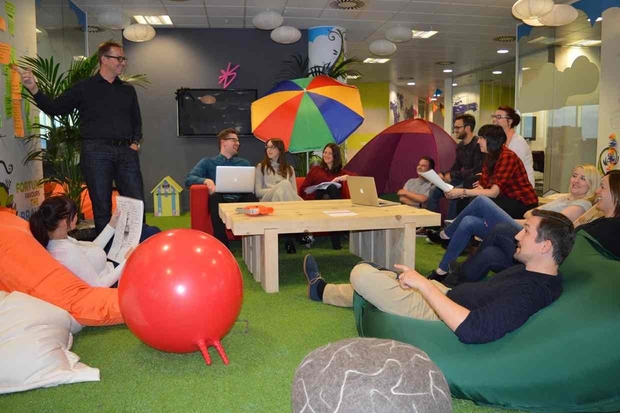 Caption: The Ingénues band serenading cows at the UW-Madison's dairy barn (1930).
You have no doubt heard
Caption: The Ingénues band serenading cows at the UW-Madison's dairy barn (1930).
You have no doubt heard the decades-old claim that music improves milk production. In a 2001 study at the University of Leicester researchers found that milk production went up by as much as 3 percent when cows listened to slow tunes like
R.E.M.'s "Everybody Hurts" and
Simon & Garfunkel's "Bridge over Troubled Water."
The cows preferred their milking moods enhanced by slow songs rather than lively ones like “
Great Balls of Fire” by piano thumping Jerry Lee Lewis.
Not long ago the
BBC reported psychological studies about retail store’s music’s influence on listener buying patterns, “What is shop music doing to your brain?”
Almost all the studies of music and productivity suggest a single digit percentage improvement attributable to music, be it more milk, diners spending more in restaurants, or better reasoning and cognition (“the Mozart effect”).
So, that brings me to Muzak in the office. Does music help or hinder workers’ mindsets and how workers go about doing their work?
First a caution.
Many of these studies are by psychologists. There are few disciplines with a worse reputation for reaching irreproducible conclusions.
Moreover, psychology has recently had some core studies faulted for being staged, coached, and otherwise prejudiced by researchers.
And, then, there’s the infamous Dutch psychologist who skipped the R&D part; like Baron Munchausen he made up a vast number of studies to suit his (always liberal) hypotheses. Until exposed, those who agreed with the fraudulent outcomes made him into an international celebrity.
In any case, does music enhance how well workers work?
Muzak, back in the 1940s, first laid claim to the notion that music could alter, for the better, a worker’s mood. An improved mood meant a happier worker (like the cows). The implication being a contented worker would produce more of a product.
Obviously, all of us would prefer milk from contented cows not from disgruntled ones. Imagine Bossie, chewing on her cud, muttering Karl Marx: “The last capitalist we hang shall be the one who sold us the rope!”
It’s why I spend more to buy eggs laid by free-range chickens – vs. those locked up in egg factories with their copies of Das Kapital.
I think that free range eggs are likely more natural than hens and eggs hurried along a 24/7 production line.
At one place I worked, some workers wanted music.
The boss said, let’s give it a try and see what happens. The result, as you would expect around any workplace amenity, were objections to hearing an office mate’s music (sound level and selection) played over his or her radio or boom box.
Like air conditioning, it was too cold for some, too warm for others and just right for a few.
We thought the problem solved once the Walkman showed up. Now, each person could have his or her own listening device. Alas, the headphones were leaky and as annoying as sitting next to someone having a one-sided phone conversation.
Now, with open office design – people crammed together like hens in an egg factory - we probably need noise suppression more than music.
Indeed, a study at the University of Sydney found that sound privacy was the leading cause of an ailment knows as “cubicle frustration”.
It’s time for a fundamental question, one I have asked multiple times in the ten years of this blog.
What do workers want? Presumably, we want to know an answer to this question so that workers will be content and by extension give their best to any task at hand.
Tech companies have probably offered more free motivational amenities than anyone in the history of workplaces: yoga classes, bring-your-pet-to-work everyday, coffee/wine/beer bars, chair massage, hammocks and sand boxes, etc., including Happiness Officers☺
Do these initiatives (work conditions) motivate? Are they somehow better than any other external motivator? F. Herzberg termed efforts like these as no more than positive Kicks In The Ass (KITA) and while slightly better than negative KITAs (fear) none result in genuine motivation, a motivation that raises productivity and innovation.
Not one of the listed perks addresses what workers really want. Years ago, Fred
Emery listed out the real internal motivators:
Adequate elbowroom for decision-making
Opportunity to learn at work
Variety in work
Mutual support and respect
Meaningfulness
Desirable future
If these factors are in an organization’s DNA and practice, you can expect positive results.
© Copyright John Lubans 2020














 John Lubans - portrait by WSJ
John Lubans - portrait by WSJ